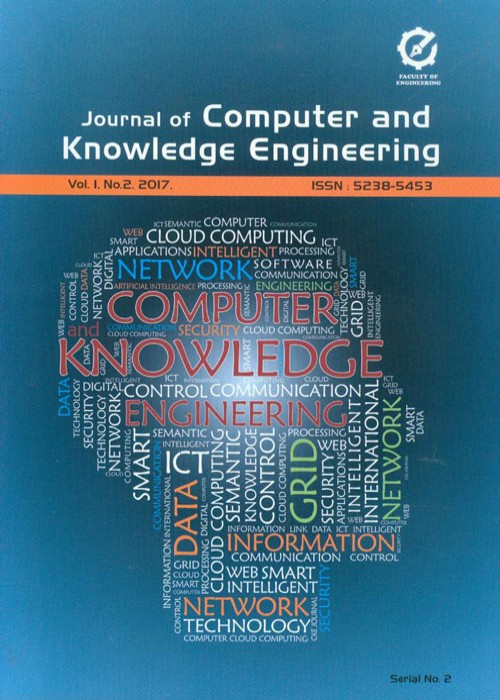فهرست مطالب
Journal of Computer and Knowledge Engineering
Volume:3 Issue: 2, Summer-Autumn 2020
- تاریخ انتشار: 1400/12/24
- تعداد عناوین: 3
-
-
Pages 1-20One of the most challenging aspects of developing information systems is the processing and management of large volumes of information. One way to overcome this problem is to implement efficient data indexing and classification systems. As large volumes of generated data comprise of non-structured textual data, developing text processing, management and indexing frameworks can play an important role in providing users with accurate information according to their preferences. In this paper, a novel method of semantic information processing, management and indexing is introduced. The main goals of this study is to integrate structured knowledge of ontology and Knowledge Bases (KBs) in the core components of the method, to enrich the contents of the documents, to have multi-level semantic network representation of textual resources, to introduce a hybrid weighting schema (salient score) and finally to propose a hybrid method of semantic similarity computation. The structured knowledge of ontology and KBs are integrated from all aspects of the proposed method. The obtained results indicate the accuracy and optimal performance of the proposed framework. The obtained results suggest that using knowledge-based models leads to higher performance and accuracy in identifying and classifying documents according to user preferences; however, if learning-based models are not provided with sufficient amount of training data, they cannot yield satisfying results. The results also demonstrate that the complete integration of ontology and KBs in information systems can significantly contribute to a better representation of documents and evidently superior functionality of information processing, management and indexing systems.Keywords: Ontology, Knowledge base, Semantic Indexing, Knowledge-based Information System, Semantic Network Representation
-
Pages 21-30Metabolic Syndrome (MS) is the collection of risk factors for coronary artery disease (CAD). It is responsible for cardiovascular disease (CVD), type 2 diabetes, cancer, renal and mental diseases with the transition from childhood to adulthood. The MS is increasing in recent decades in different societies, especially in Iran. This study was conducted to determine the predictive factors of MS in children and adolescents in Birjand (Capital of South Khorasan Province, Iran) using a data mining approach. The four different analyses for females and males (6-11 and 12-18 year-old groups) were carried out using three popular decision tree models. The most important prognostic factors for MS were high level of TG and low level of DBP and HDL in 6-11-year-old group, and high level of waist circumference (WC) and low level of TG for 12-18-year-old group. The most important factors were TG and HDL in females and WC and TG in males. Raising teens and families' awareness of the risk factors, screening children and teens, monitoring and controlling the risk factors through life style correction such as more physical activity and healthy eating are recommended.Keywords: Index terms, Metabolic Syndrome, Data mining, Decision Tree, School-Age Population
-
Pages 31-36Probabilistic model checking is a formal method for verification of the quantitative and qualitative properties of computer systems with stochastic behaviors. Markov Decision Processes (MDPs) are well-known formalisms for modeling this class of systems. Bounded reachability probabilities are an important class of properties that are computed in probabilistic model checking. Iterative numerical computations are used for this class of properties. A significant draw-back of the standard iterative methods is the redundant computations that do not affect the final results of the computations, but increase the running time of the computations. The study proposes two new approaches to avoid redundant computations for bounded reachability analysis. The general idea of these approaches is to identify and avoid useless numerical computations in iterative methods for computing bounded reachability probabilities.Keywords: Probabilistic model checking, Iterative numerical methods, Bounded Reachability probabilities, Markov decision processes


